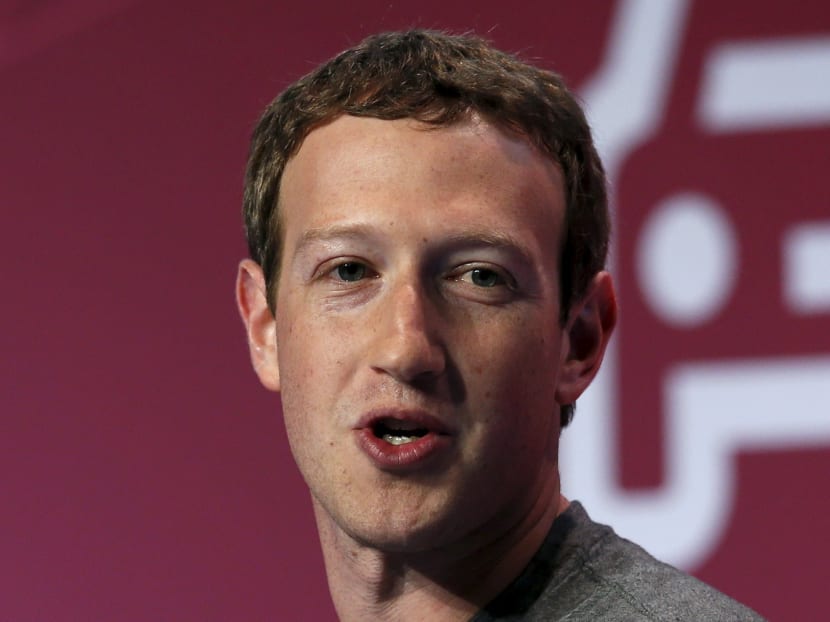Facebook’s Mark Zuckerberg loses control of social media
NEW YORK — Facebook founder Mark Zuckerberg briefly found his Twitter account hijacked, as were at least two of his other social media accounts.

Mark Zuckerberg, founder of Facebook. Reuters file photo
NEW YORK — Facebook founder Mark Zuckerberg briefly found his Twitter account hijacked, as were at least two of his other social media accounts.
Mr Zuckerberg’s Facebook account and password were not compromised, the company said in a statement; his account on Facebook-owned Instagram was also unaffected. Facebook said Monday morning (June 6) that none of the company’s systems or accounts were accessed and that Mr Zuckerberg’s affected accounts have since been re-secured.
A person close to the situation confirmed that Mr Zuckerberg’s LinkedIn and Pinterest accounts also were affected. Officials for both of those social media networks didn’t immediate respond to requests for comment.
Screenshots preserved by the technology website Engadget showed someone with access to his largely dormant Twitter account using it to say Mr Zuckerberg was “in the LinkedIn database” and inviting the social media mogul to get in touch. LinkedIn declined to comment.
It’s not yet clear how the hack happened, although a spate of massive data breaches at companies — along with recent news that a 2012 breach at LinkedIn was much bigger that previously disclosed — has recently given hackers a wealth of password data to work with. Several high profile Twitter users have also had their accounts hijacked in recent weeks.
Mr Zuckerberg’s name is synonymous with Facebook, but the billionaire has several accounts on rival social networks, including one registered with Google. None appear very active.
The hacking of Mr Zuckerberg’s social media accounts serves as a reminder that everyone is susceptible to hacking.
Safeguards you could take include creating strong passwords and changing them frequently. Yes, all this is a pain, and it’s not your fault that the tech industry couldn’t grapple with the rise in security breaches. But if you do nothing, someone could break into your financial account or use your social media account to spew obnoxious or hateful messages. Think of how many friends you’ll lose.
Here are six things you can do to stay safe.
PICK A GOOD PASSWORD
The more complicated and lengthy a password is, the harder it will be for hackers to guess.
Don’t include your kids’ names, birthdays or references to any other personal details. Hackers routinely troll Facebook and Twitter for clues to passwords like these. Obvious and default passwords such as “Password123” are also bad, as are words commonly found in dictionaries, as these are used in programs hackers have to automate guesses.
Long and random combinations of letters, numbers and other characters work best.
DON’T REUSE PASSWORDS
Avoid using the same password for multiple sites, so that a break of your school’s PTA site wouldn’t lead hackers to your online banking account.
You can make things easier on yourself by using a password-manager service such as LastPass or DashLane. They remember complex passwords for you — but you have to trust them. Last June, LastPass disclosed “suspicious activity” and told users to change their master passwords.
Some web browsers such as Apple’s Safari and Google’s Chrome also have built-in password managers. They work if you switch devices but not if you switch browsers.
NEW TOOTHBRUSH? NEW PASSWORD
It’s important to change your password regularly, just as good physical hygiene calls for replacing your toothbrush every few months.
And don’t be tempted to recycle an old one. The longer a password sits around, the more likely it is to fall into the wrong hands.
And if company announces that it’s been hacked, change your password right away, even if it says your information wasn’t compromised. Breaches are often worse than they first appear. LinkedIn recently disclosed that a 2012 breach affected 117 million accounts — not the 6.5 million previously thought.
MAKE IT HARDER
Multi-factor identification — which asks users to enter a second form of identification, such as a code texted to their phone — will provide additional protections at services that offer it.
Even if hackers manage to get your password to, say, Facebook, they still need your phone with the texted code. It’s not as much of a pain as it seems, as services typically ask for this second code only when logging on from a new device or browser.
TAKE OUT THE TRASH
Delete or deactivate accounts you no longer use. Got a spam-filled Juno or AOL email account lying dormant? Maybe it’s time to say goodbye.
Just last week, Myspace said a hacker has put up for sale login information for some accounts created before June 11, 2013.
If, like most people, you’ve moved on to greener social media pastures, permanently get rid of the ones you no longer use. This often can be done through your account settings — as long as you still have your password to sign in.
SOCIAL MEDIA CLEAN UP
And while we’re on the subject of social media, make sure you restrict posts to just your actual friends. You can adjust that in the settings.
Some companies try to help their users with this. Facebook, for example, occasionally prompts its users to review who can see their personal information and how strong their security settings are.
Nonetheless, assume that everyone everywhere can see what you’re posting. Personal tidbits can not only help hackers crack easy passwords, they also can be used to answer supposedly personal questions to reset passwords. AP





